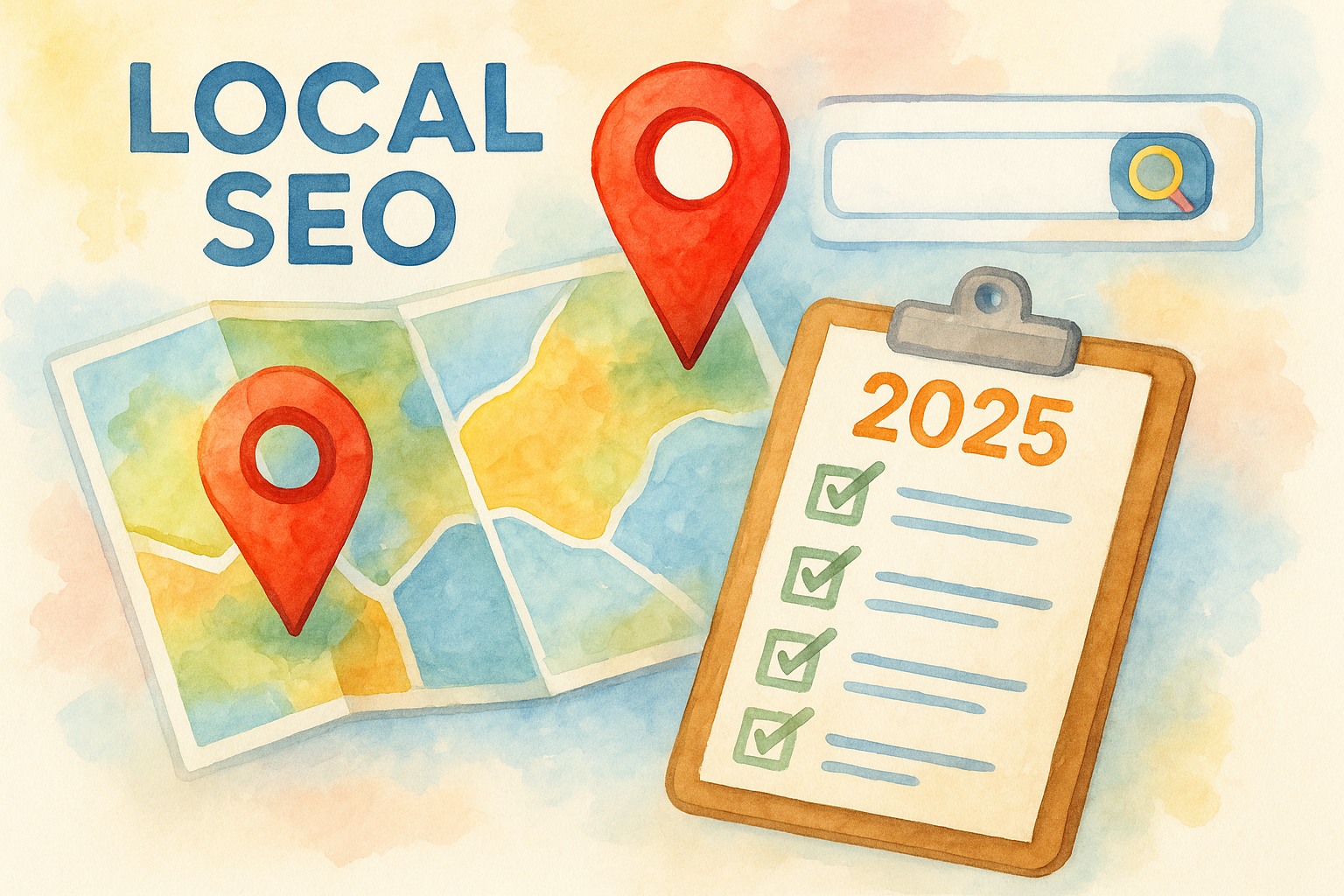If you’re a small business looking to get found by more local customers in 2025, local SEO isn’t just an option—it’s essential. As more people use their phones and laptops to look up businesses right in their neighborhood, making your company visible in these searches gives you a serious edge. Let’s break down exactly what you need to do to win at local SEO this year.
Local SEO for Small Businesses: The Ultimate Checklist for 2025
Understanding the Importance of Local SEO
Local SEO is all about making sure your business pops up when people search for services or products near them. With so much competition out there, especially from big brands, small businesses need every advantage they can get to show up in local search results.
Why should you care? For starters, 46% of all Google searches have local intent. That means almost half of everyone searching on Google is looking for something nearby. If your business isn’t optimized for local searches, you’re missing a huge chunk of potential customers.
Another eye-opening fact: 62% of consumers will disregard a business if they can’t find them online. That means having a strong online presence is no longer optional, it’s critical. Local SEO ensures you don’t just exist online, but you’re easily found by the people who are most likely to walk through your door or pick up the phone.
And here’s the kicker—local SEO isn’t just about being seen, it’s about driving action. 78% of local mobile searches lead to an offline purchase. The stakes are high, but so are the rewards if you get it right.
Optimizing Your Google Business Profile
Your Google Business Profile (formerly Google My Business) is the cornerstone of local SEO. It’s the listing that pops up when someone finds your business on Google Search or Maps. Yet, 56% of local businesses haven’t claimed their Google My Business listing. If you’re in that group, it’s time to take action now.
First, claim your business profile. Make sure every detail is accurate—your business name, address, phone number, website, and hours. Don’t forget to add high-quality photos that showcase what makes your business unique. Well-optimized photos can significantly increase engagement and trust.
- Categories: Select the most accurate primary and secondary categories for your business. This helps Google understand what you do and match you with the right searches.
- Attributes: List your amenities, accessibility features, and any unique selling points.
- Posts: Use Google Posts to share updates, promotions, or events. This not only keeps your profile fresh but also gives visitors a reason to engage with your business.
- Q&A Section: Proactively answer common questions. This helps potential customers get the info they need quickly and reduces friction.
And remember, 86% of consumers use Google Maps to find local businesses. If your profile isn’t complete or up-to-date, you could be missing out on a huge audience actively looking for what you offer. Your Google Business Profile is often the first impression people have of your business—make it count!
Building Local Citations and Backlinks
Citations are online mentions of your business name, address, and phone number (also known as NAP). These can appear on directories, local business associations, and social platforms. The more consistent and widespread your citations are, the more trustworthy you’ll appear to search engines—and customers.
Start by ensuring your NAP information is exactly the same everywhere it appears online. Even a small typo or inconsistency can confuse both customers and search engines, potentially hurting your rankings.
Backlinks, or links from other reputable local websites, are another important factor. Consider reaching out to:
- Chambers of commerce
- Local news outlets
- Community organizations
- Industry partners
Getting listed on these sites not only improves your visibility but also signals to Google that your business is a trusted local resource. Don’t forget to check out https://brenham.buzz for opportunities to boost your local presence.
When your business is listed accurately across the web, you’re building authority and making it easier for customers to find you wherever they’re searching.
Encouraging and Managing Online Reviews
Online reviews have become the new word-of-mouth, and they play a huge role in local SEO. Not only do they influence potential customers, but they also signal trust and relevance to search engines. According to research, 88% of consumers trust online reviews as much as personal recommendations.
Here are a few strategies to encourage more reviews:
- Ask satisfied customers to leave feedback after a purchase or service
- Make it easy by providing direct links to your review profiles
- Respond to every review—positive or negative—in a professional and friendly manner
- Thank customers for their input and address any concerns promptly
Remember, reviews are not just about quantity but also about quality and responsiveness. Prospective customers are looking for businesses that care about their reputation and actively engage with their community.
Managing your reviews is equally important. Timely and thoughtful responses show you value feedback and are committed to excellent service. This can turn a negative review into a positive experience and even win over skeptical customers. Don’t underestimate the power of reviews—they can make or break a small business’s reputation and visibility.
Creating Localized Content
To really connect with your local audience, your website and blog should include content that speaks directly to their interests, events, and needs. This could be anything from guides about your town, spotlights on local partnerships, or announcements about community events.
Localized content helps you rank for specific searches that are relevant to your area. For instance, “best coffee shop in Brenham” or “emergency plumber near me” are the types of searches that can drive targeted traffic to your business website.
By consistently publishing local content, you show both Google and your customers that you’re an active part of the community. This not only boosts your search rankings but also builds trust and loyalty among your audience.
Ensuring Mobile-Friendly Website Design
Mobile searches are dominating the way people find businesses today. In fact, 30% of all mobile searches are related to location. If your website isn’t mobile-friendly, you’re losing out on a significant portion of local traffic—and potential sales.
Make sure your website:
- Loads quickly on smartphones and tablets
- Has easy-to-read text and clear navigation
- Features click-to-call buttons and map integrations
People expect seamless experiences on their devices. A mobile-optimized site ensures that customers can find what they need and contact you without frustration. Plus, Google prioritizes mobile-friendly websites in local search results, giving you an extra boost in visibility.
Leveraging Social Media for Local Engagement
Social media isn’t just for sharing memes and cat videos—it’s a key tool for connecting with your local audience. Use platforms like Facebook, Instagram, and even Nextdoor to build relationships with your community and showcase your business’s personality.
Share updates about special events, new products, or local partnerships. Engage with followers by responding to comments and messages quickly. This helps build a loyal customer base that’s more likely to support your business and spread the word.
Remember, local engagement isn’t just about broadcasting your message—it’s about starting conversations and becoming a trusted resource in your area. As you build your social presence, you’ll find more people turning to you first when they need what you offer.
Ready to take your local SEO to the next level? Start working through this checklist and watch your business grow in 2025. For more tips, resources, and ways to connect with your community, keep an eye on https://brenham.buzz.


Leave a Reply